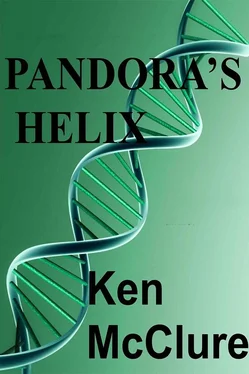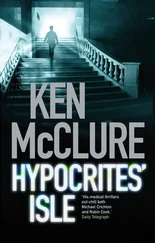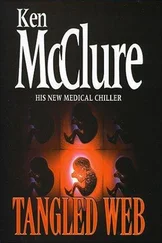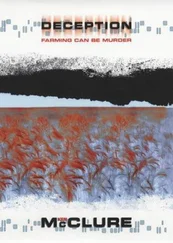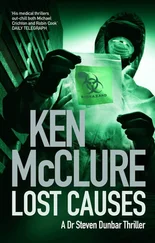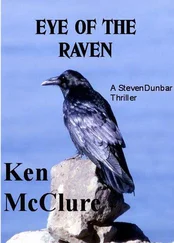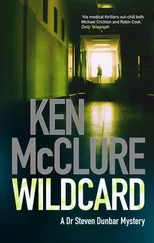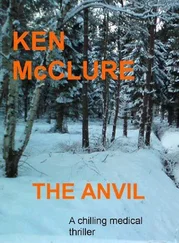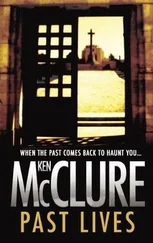Ken McClure - Pandora's Helix
Здесь есть возможность читать онлайн «Ken McClure - Pandora's Helix» весь текст электронной книги совершенно бесплатно (целиком полную версию без сокращений). В некоторых случаях можно слушать аудио, скачать через торрент в формате fb2 и присутствует краткое содержание. Год выпуска: 1997, ISBN: 1997, Издательство: Simon & Schuster, Жанр: thriller_medical, на английском языке. Описание произведения, (предисловие) а так же отзывы посетителей доступны на портале библиотеки ЛибКат.
- Название:Pandora's Helix
- Автор:
- Издательство:Simon & Schuster
- Жанр:
- Год:1997
- ISBN:978-0-684-48163-7
- Рейтинг книги:4 / 5. Голосов: 1
-
Избранное:Добавить в избранное
- Отзывы:
-
Ваша оценка:
- 80
- 1
- 2
- 3
- 4
- 5
Pandora's Helix: краткое содержание, описание и аннотация
Предлагаем к чтению аннотацию, описание, краткое содержание или предисловие (зависит от того, что написал сам автор книги «Pandora's Helix»). Если вы не нашли необходимую информацию о книге — напишите в комментариях, мы постараемся отыскать её.
Pandora's Helix — читать онлайн бесплатно полную книгу (весь текст) целиком
Ниже представлен текст книги, разбитый по страницам. Система сохранения места последней прочитанной страницы, позволяет с удобством читать онлайн бесплатно книгу «Pandora's Helix», без необходимости каждый раз заново искать на чём Вы остановились. Поставьте закладку, и сможете в любой момент перейти на страницу, на которой закончили чтение.
Интервал:
Закладка:
“Amen to that.”
“How’s your little patient, the one you were going to treat with the new vector?”
“He’s hanging on by his fingertips,” said Neef.
“I’m sorry.”
Neef saw that he was drifting into a conversation he’d rather not be in. He looked at his watch and said that he’d have to go.
“Me too,” said Heaton. “Monthly budget meeting time and that damned Martin woman is still on my back for more nurses.”
“She probably needs them,” said Neef.”
“You medics and nurses are all in cahoots; I know you are,” joked Heaton.
“Get rid of us and the place would run smooth as clockwork,” said Neef.
Heaton gave him a furrow-browed look and left.
Neef returned to the unit and a bad moment he had not anticipated. Ann wasn’t in her office to warn him. He opened the door to his office and found David Farro-Jones sitting there. Neef swallowed and hoped his face wasn’t showing the discomfort he felt.
“There you are,” smiled Farro-Jones. “Your secretary said you’d be back soon, so I thought I’d wait. Hope you don’t mind?”
“Of course not,” said Neef, trying appear normal as his pulse rate climbed.
“I was passing. I thought I’d look in and see how your brain tumour patient was doing. Still a success story?”
“Absolutely,” said Neef. “He’s just been given the all clear. Let me show you his latest scan.”
“Absolutely marvellous,” said Farro-Jones. “I’m so pleased for you chaps. Max must be over the moon?”
“He’s pleased,” agreed Neef, “but this other business has taken the shine off it for him and Menogen.”
“I suppose so,” said Farro-Jones, his voice filled with concern. “These bloody newspapers have a lot to answer for. I hope the company’s going to sue?”
“I don’t know,” confessed Neef. “I haven’t seen Max to ask him. They closed down the Menogen labs.”
“I heard,” said Farro-Jones solicitously. “Talk about jumping the gun. You know, in a way I feel responsible.”
“How so?” asked Neef, almost choking.
“I was the one who spotted the coincidence in the addresses of Menogen and young Melanie.”
“But you didn’t tell anyone,” said Neef.
“No, of course not,” said Farro-Jones with a smile that made Neef feel uncomfortable. “It’s just that I keep worrying I may have left something lying around on my desk. Maybe someone saw it and decided to make themselves some pocket money by leaking it to the press.”
“It’s water under the bridge now,” said Neef. “The damage has been done, however it happened.”
“I suppose so,” Farro-Jones conceded. “Are you going to show me that scan?”
“Of course.” Neef brought out Thomas Downy’s last CT scan and let Farro-Jones examine it.
“Absolutely amazing,” said Farro-Jones. “It’s really hard to believe that this patient was actually dying of a brain tumour only a few weeks ago.”
“It certainly is.”
“You have to admit it, Michael; this is the therapy of the future. It’s going to change the whole face of medical science.”
“I’d find it hard to argue,” agreed Neef.
Farro-Jones returned the scan. “I’d best be getting back, now that I’ve see what the competition can do!”
Neef tried to laugh along but it was difficult. He felt a flood of relief when the door closed behind Farro-Jones. It was short-lived. His eyes fell on the address of the Little family he’d left lying on his desk. It was half tucked under his desk diary but the name Little was clearly visible. Could Farro-Jones have seen it? Neef couldn’t decide. There was no way of knowing where Farro-Jones’ eyes might have strayed during the time he’d been alone in the room.
Neef decided to act quickly. There was a chance that Farro-Jones had not seen the memo but there was equally a chance that he had. If he wanted to know the truth about the man’s involvement in the cancer deaths the sooner he spoke to Mrs Little the better. He threw on his jacket and told Ann Miles he was going out for a while.
The Combe Tower estate was one of the worst areas in the city. It suffered all the social ills of the day, from high unemployment to heroin addiction and gang warfare. The authorities were content to contain the area rather than police it, however much they denied this publicly. Neef took a look behind him at the Discovery, wondering how much of it would be left when he returned. The burnt out wreck of a Ford Cortina at the far end of the car park did not fill him with confidence.
Both lifts were out of action and a group of women, weighed down with plastic shopping bags were complaining about it in the hallway as he sought the door leading to the stairs.
“Two bloody days!” were the last words he picked up as he started to climb. At each landing, he had to pick his way through accumulated garbage. Beer cans and crisp packets predominated although in the gloom of the third landing corner he saw a syringe lying there among the debris. The dried blood of its user colouring the plastic barrel brown.
As he approached the fourth floor he heard voices at the top of the stairs. It wasn’t reassuring; it was the sound of a group of young men. As Neef reached the landing the sound suddenly stopped and the eyes of four youths who were playing cards stared up at him.
“You got a problem?” asked one.
“No problem,” said Neef passing by, hoping that would be an end to it. He was relieved to hear the conversation start again behind him as he sought out flat number 3 and knocked on its chipped and battered door.
A middle aged woman with sunken cheeks and straight grey hair answered. She wore a woollen V-necked jumper with a gold crucifix hanging round her bare neck, a shapeless skirt that seemed to have pleats where no pleats were intended and slippers with a large furry ball on each toe.
“Mrs Little?”
“Who’re you?”
“I’m Dr Neef from St George’s hospital.”
The woman’s face took on a puzzled look. “What d’you want?”
“I’d like to talk to you about your daughter.”
“Susan? She’s dead. What’s there to talk about?”
“I’m sorry, believe me, but I’d like to ask you about her treatment. There are some things I have to know.”
“Susan wasn’t treated at your hospital. It was University College.”
“Could I come in for a few minutes, Mrs Little?” Neef asked. He was aware of neighbours beginning to take an interest in what was going on.
“Suppose so,” agreed the woman reluctantly. “I was doing my ironing.”
Neef was led into the living room where an ironing board stood with a blouse straddled across it. A wooden clothes horse stood beside it with various items, already ironed, hanging on it. There were no children’s clothes.
“Was Susan an only child, Mrs Little?” asked Neef.
Ann Little nodded. “She was all I had left. Her dad died three years ago.”
“I’m sorry,” said Neef. “And she had cystic fibrosis?”
“From the time she was born.”
“Was she looked after by University College Hospital from the beginning?”
“A wonderful place,” said Mrs Little. “They were all so good to her, especially the physios who cleared her lungs.”
“Was there ever any mention of a cure for Susan?” asked Neef.
“Last year,” replied Mrs Little, sitting down on the edge of a chair facing Neef. She shook a cigarette free from a packet that had been sitting on the mantelpiece and lit it. “They tried out a new treatment for people like Susan but it didn’t come to anything.”
“Was that the Gene Therapy trial?” asked Neef, excited at the prospect of making the connection with Farro-Jones.
“That was it,” agreed the woman, blowing out a cloud of smoke. “They were going to put some new gene into Susan’s lungs so she wouldn’t need the physio any more but something went wrong. It didn’t work out.”
Читать дальшеИнтервал:
Закладка:
Похожие книги на «Pandora's Helix»
Представляем Вашему вниманию похожие книги на «Pandora's Helix» списком для выбора. Мы отобрали схожую по названию и смыслу литературу в надежде предоставить читателям больше вариантов отыскать новые, интересные, ещё непрочитанные произведения.
Обсуждение, отзывы о книге «Pandora's Helix» и просто собственные мнения читателей. Оставьте ваши комментарии, напишите, что Вы думаете о произведении, его смысле или главных героях. Укажите что конкретно понравилось, а что нет, и почему Вы так считаете.
